Table of Contents
Are Toxic Candles Harming Your Health? What You Need to Know
This page may contain affiliate links. We may earn a commission on purchases, at no additional cost to you. Learn more →
Few things transform a space quite like lighting a scented candle at the end of a busy day. I've always loved how they instantly create that cozy, calming atmosphere - and I'm not alone. Candles have become a staple in many of our self-care routines.
I never really stopped to think about what I was burning, and if you're anything like me, you have probably assumed that burning scented candles is harmless.
When I began researching toxic candles, what I discovered made me pause. In fact, conventional candles come with hidden health risks!
From synthetic fragrances and petroleum-based waxes to hidden heavy metals in wicks, toxic candles harbor chemicals that we unknowingly release into our homes.
Let's explore what's really in our candles and discover healthier alternatives that still create that warm, inviting ambiance we love.
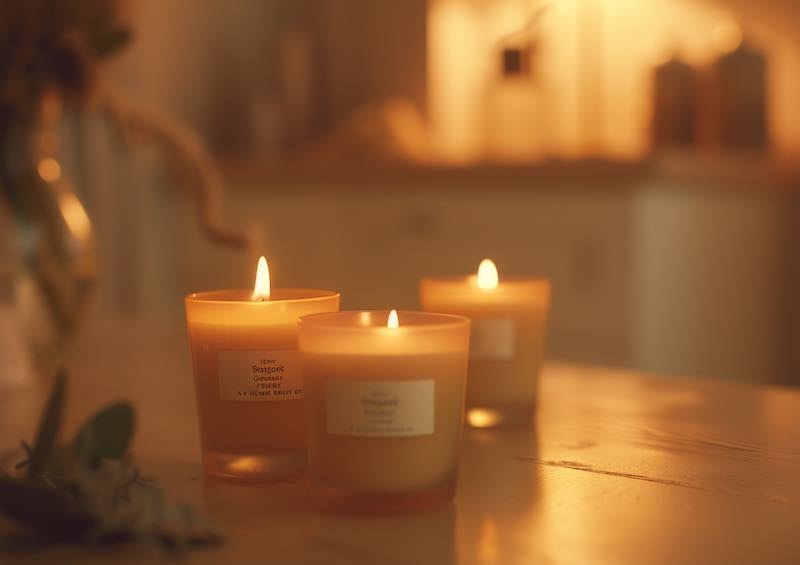
What makes Scented Candles Toxic?
Most of us don't think twice about the materials in our favorite candles. Let's explore why we should.
Wax Composition: Paraffin Wax and Volatile Organic Compounds (VOCS)
Most candles are made with paraffin wax, a by product of petroleum. While paraffin is affordable and versatile, burning it releases more than just a cozy glow - it emits toxic chemicals, including volatile organic chemicals (VOCs), which pose significant health and environmental concerns
The Dangers of Burning Paraffin Wax:
When paraffin burns, harmful VOCs, including benzene, toluene, aldehydes, and hydrocarbons are released into the air. Many of these VOCs are classified as carcinogens, meaning they increase cancer risk, especially with prolonged exposure.
Burning scented candles release soot, which not only stains walls and furniture, but can build up in our lungs, raising your risk of respiratory issues, including lung cancer.
Here's something you might not know - candles can release VOCs even when they're not lit, silently affecting your indoor air quality by 'off-gassing' into the surrounding space air, and removal of VOCs can be challenging!
Synthetic Fragrances and Phthalates
Fragrances, although they smell glorious, often hide an assortment of chemicals. Synthetic fragrances, common in candles, frequently contain phthalates and other VOCs - especially when heated, their effects become more potent.
-
Phthalates, are used to stabilize and prolong scents, but they're also endocrine disruptors that interfere with our hormones. Prolonged exposure can lead to reproductive and developmental issues, particularly with prolonged exposure, making fragranced candles a growing concern for human health
Fragrance Oils vs Essential Oils
While essential oils are derived from plants, capturing the plant's natural scent, fragrance oil are composed of synthetic chemicals used to replicate specific scents, including those not found in nature.
Fragrance oil is often favored as it can provide a broader range of scents and can be used at a lower cost than essential oils.
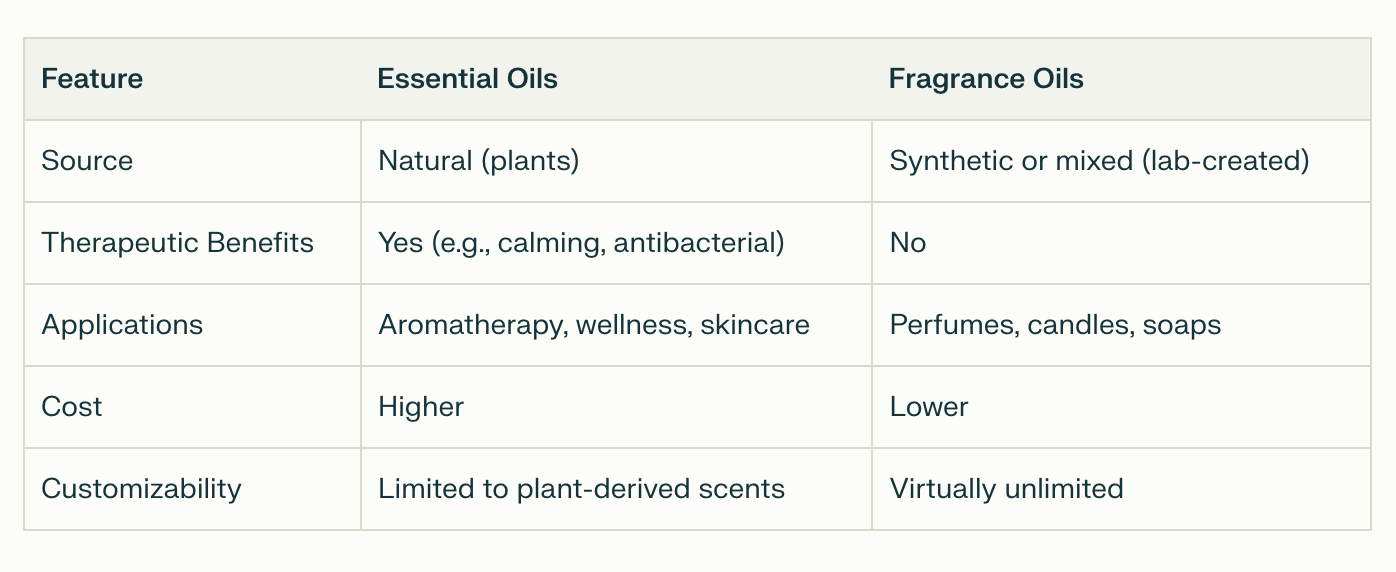
Candle Wicks and Heavy Metals
Candles wicks are often overlooked, but can be a surprising source of toxic emissions. While lead-core candle wicks are banned in many place, they may still appear in imported candles.
These metallic wicks, used to keep the flame steady and extend burn time, can release harmful lead particles into the air that settle as dust.
Children are particularly vulnerable to lead exposure, prolonged exposure to lead has been linked to
-
developmental delays
-
cognitive impairment
-
and even organ damage.
Even with zinc or tin wicks, it is important to stay vigilant about potential risks.
Is Burning Scented Candles Really Harming us?
Health and Environmental impacts
We spend around 90% of their time indoors, so candle pollutants can have a significant impact, especially for children, the elderly, and those with respiratory conditions.
Short-term exposure can cause headaches, coughing and wheezing. In a study, nearly 25% of students exposed to candles for over an hour reported respiratory symptoms
Longer-term health effects: Are candles endocrine disruptors?
Research shows that long-term exposure may have endocrine-disrupting effects, leading to reproductive issues, increased pregnancy loss in women, and decreased testosterone in males
Environmental Impact
Paraffin wax candles also take a toll on the planet. As petroleum byproducts, they contribute to greenhouse gas emissions and have a larger carbon footprint compared to alternative candles like soy or beeswax.
Regulatory Gaps and Industry Challenges
The candle industry faces significant challenges, from weak regulations to misleading labels, leaving consumers in the dark about what is truly in their candles
-
In the US, oversight of candle production by agencies like the Consumer Product Safety Commission and the Environmental Protection Agency is far less stringent than in the EU, where VOC emissions and harmful chemicals are more tightly regulated
-
Under the Clean Air Act, candles fall outside of the strict air pollution rules, meaning manufacturers are not required to disclose synthetic fragrance chemicals, and can get away with simply labelling them as 'fragrance' on the ingredients
Unregulated claims and label transparency: Terms like 'natural', 'eco-friendly' and 'organic' although may seem reassuring are unregulated and often mislead consumers, as many candles labeled as 'non-toxic' may still contain harmful chemicals. This makes it tricky for consumers to identify clean and safe candle options

Non-Toxic Candles: What are the safest candles to burn?
Beeswax Candles: The Gold Standard
For candle enthusiasts like me, beeswax candles are the best choice - offering increased safety, sustainability and a reduced environmental impact.
In fact, compared to paraffin wax candles, these non toxic candles can lower greenhouse gas emissions by 45-50%!
Why Beeswax is Better:
-
All-natural and eco-friendly: Beeswax burns cleanly, emitting minimal soot and VOCs, making it a healthier option compared to paraffin-based candles
-
Air purification (debatable): Some claim beeswax candles can purify the air by releasing negative ions that can bind to the positive ions in pollutants, causing them to become to heavy to fall to the ground, where they can be vacuumed, however, the evidence is limited
Choosing high-quality beeswax:
-
Look for 100% beeswax, and is free from synthetic fragrance
-
Avoid bleached beeswax (often lighter or white in colour), as it may have been chemically processed
Recommended brands:
• Living Good Candle Co *, Bluecorn *, Happy Organics*
Soy Wax Candles: Affordable and Renewable
Soy wax candles are a popular non-toxic option—widely available, budget-friendly, and eco-conscious. They are a great alternative if you're looking to reduce your environmental footprint.
Why choose soy candles?
-
Sustainable: Made from soybeans, these candles more renewable, and have a cleaner burn that paraffin with lower chemical release
-
Accessibility: Their widespread use makes them an easy, eco-conscious option
Potential concerns:
-
GMO soybeans: Many soy wax products come from genetically modified soy. Opt for brands that verify their products as non-GMO.
-
Pesticide contamination: Soybean cultivation often involves heavy pesticide use. Look for brands prioritizing organic practices.
-
Processing chemicals: Some soy waxes are processed with hexane or other chemicals. Choose brands that disclose their production methods and ingredients.
Recommended brands:
Coconut Wax Candles: Eco-friendly and Long-Lasting
Coconut wax is the new star of the market, celebrated for its eco-friendliness, and longer, clean burn. If you are looking for a sustainable option and with a hint of luxury, coconut candles are a great pick!
Why Coconut Wax Stands Out:
-
Sustainable: Made from coconuts—a renewable resource—coconut wax is an environmentally conscious choice.
-
Longer burn time: Its slow-burning properties mean fewer candle replacements.
-
Clean burning: Produces minimal soot, keeping indoor air fresher and surfaces cleaner.
Considerations:
-
Blends: Coconut wax can be mixed with other waxes, ensure to check labels to see if combined with paraffin
-
Cost: Coconut wax candles are often pricier, than other alternatives, however, this is reflected in their premium quality
Recommended brands:
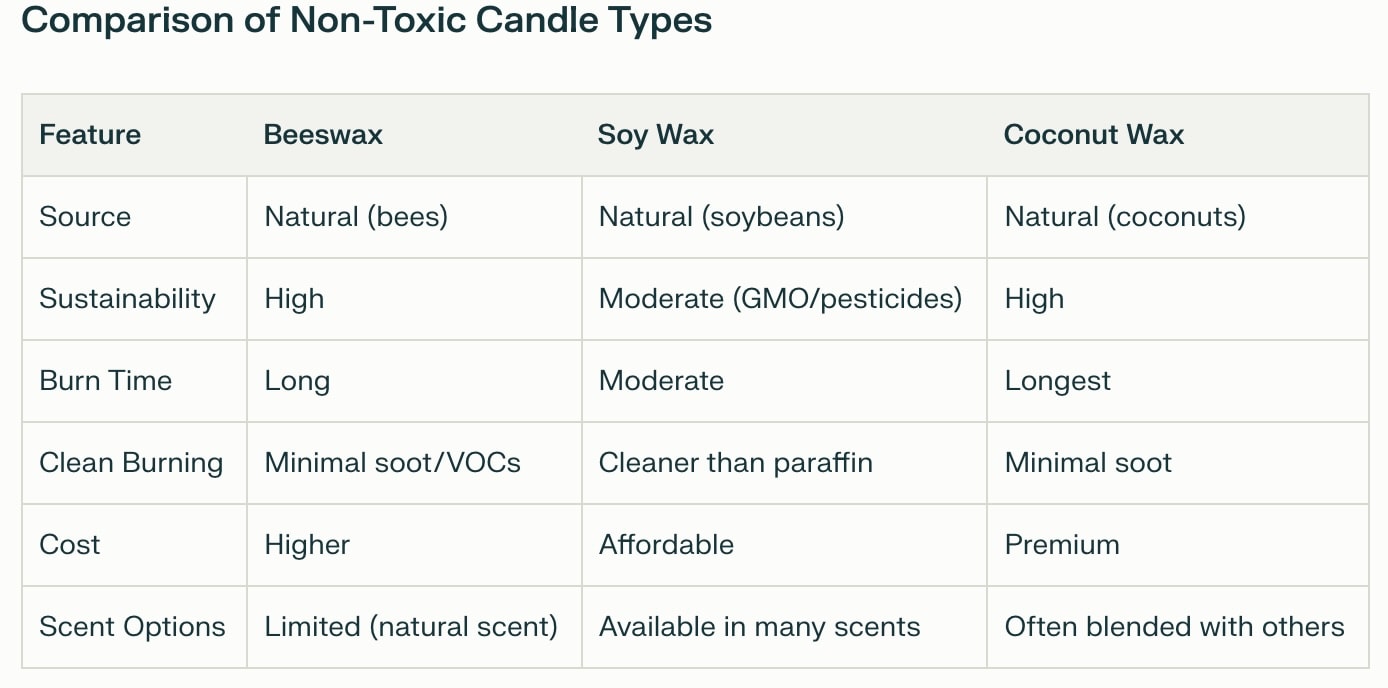
Natural Scent and Fragrance-Free Options
When on the hunt for natural wax candles, opt for a candle with 100% pure essential oils instead of synthetic chemicals and look for natural wax and unscented candles that skip additives entirely
Check for:
-
Transparency: Brands that are transparent about fragrance use and clearly list ingredients to ensure they are fragrance-free
-
Certifications: Labels like 'non-toxic' and 'phthalate-free' or third party seals like Green Seal or EcoCert or MADE SAFE to ensure safety and eco-friendliness
Natural Wick Materials
The wick also plays a crucial role in ensuring a clean burn:
-
Opt for wicks made from sustainable natural materials like cotton, hemp, or wooden wicks .
-
Avoid metal-core wicks (often found in cheaper candles), to avoid unnecessary metal emissions into the air when burned.
By recognizing the distinctions among various candle types and their effects on health and the environment, you can make more informed and mindful choices.
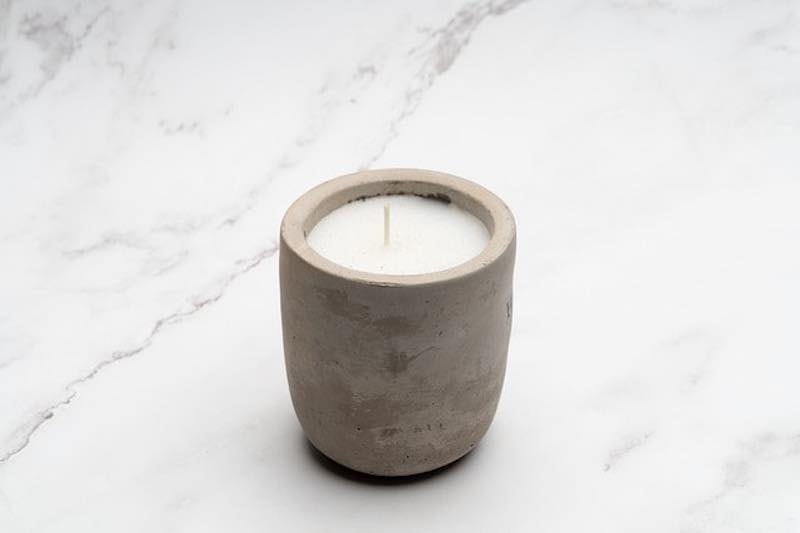
Practical Tips for Safer Candle Use
Burning candles responsibly can make a huge difference in reducing risks. Here's how:
-
Increase ventilation: Keep rooms well-ventilated by opening windows or using fans to disperse VOCs. Air purifiers are also a great option to filter allergens and pollutants from the air, enhancing air quality!
-
Limit use: By burning fewer candles at a time, and limiting sessions to 1-2 hours, this can help to mimics pollutants and prevent overheating wax
-
Trim candle wicks: Always trim wicks to around 1/4 inch before lighting to ensure a steadier flame, reduce soot, and minimize smoke
-
Placement matters: Avoid placing candles in drafty spots in your house to prevent uneven burning and excess smoke
Debunking Myths About Candles
-
"All candles are dangerous"
Not true! While paraffin candles release VOCs, natural options like soy, beeswax, or coconut wax burn cleaner with fewer pollutants. No candle is completely risk-free, but natural alternatives are far safer.
-
"Natural candles are completely risk-free"
Even natural candles (beeswax and soy) produce carbon dioxide when burned. However, their risks are much lower compared to paraffin. By implementing the practical tips for safer use, you can further minimise any potential risks.
Alternative Ways to Scent Your Home Without Candles:
-
Simmer Pots: Create your own natural air refesher by simmering citrus slices, herbs, and spices on the stove. It's an easy, customisable way to make your home smell glorious!
-
Natural Potpourri: Craft potpourri from dried flowers, herbs, and spices, for visually pleasing and aromatic option to elevate your homes natural scent. To elevate this, you can also add a essential oils like lavender, rose petals or chamomile
-
Essential Oil Diffusers (my personal fave): A flawless, modern option for scenting your home, these diffusers offer natural fragrances, and even potential wellness benefits e.g. lavender can improve your relaxation and your sleep!
-
Himalayan Salt Lamps: While the air-purifying claims are debated, these lamps pair well with other scenting methods to provide the perfect cozy glow
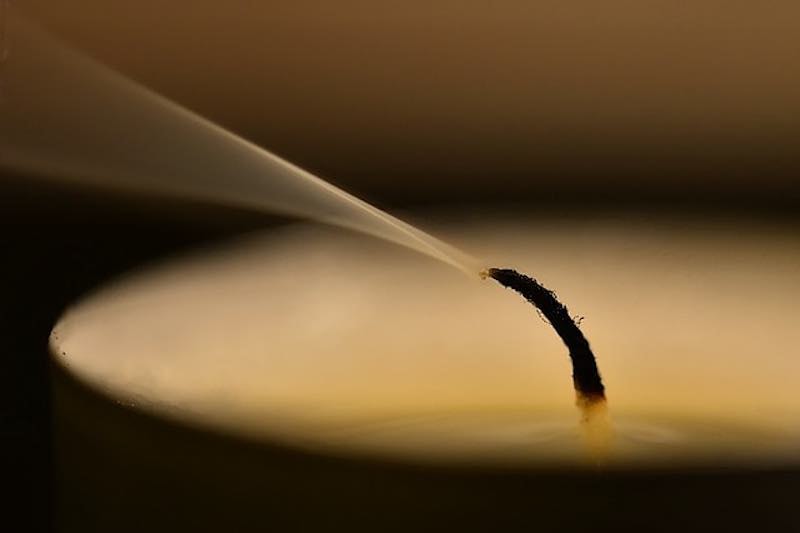
Key Takeaways
-
Health Risks: Burning paraffin wax candles releases harmful VOCs and soot, which contribute to indoor air pollution. These toxics can affect your respiratory health, and can even increase your risk of cancer with prolonged exposure
-
Fragrance Chemicals & Endocrine Disruptors: Synthetic fragrances in candles often contain phthalates and other harmful chemicals. These endocrine disruptors can disrupt hormones, and can lead to reproductive or developmental issues, particularly with long-term exposure
-
Safer Alternatives: For a cleaner, healthier burn, choose beeswax, soy, or coconut wax candle wax. These options produce minimal soot and VOC emission, and are more eco-friendly!
-
Practical Tips: Enhance air quality by increasing ventilation, be sure to trim candle wicks to reduce soot, and limiting burn time to 1-2 hours per session. Always ensure your candles are in a well-ventilated area to disperse pollutants.
-
Non-Candle Alternatives: If you want to scent your home without the risks of candles, try natural using simmer pots, essential oil diffusers, or Himalayan salt lamps. These methods can create a cozy atmosphere without the harmful effects of burning candles.
FAQ to Toxic Candles
How do you know if a candle is toxic?
Toxic candles typically contain paraffin wax, which releases harmful chemicals like benzene and toluene when burned. To identify non-toxic options, look for candles made from natural waxes (e.g., beeswax, soy, or coconut), scented with essential oils, and using cotton or wooden wicks.
What are the least toxic candles?
The least toxic candles are made from natural waxes like beeswax, soy, or coconut wax. These options burn cleanly, producing minimal soot and VOCs. For added safety, choose candles scented with pure essential oils and free from synthetic fragrances or dyes, and ensure they use natural wicks like cotton or wood.
Are candles endocrine disruptors?
Some candles containing synthetic fragrances or paraffin wax may emit chemicals that act as endocrine disruptors. Opting for candles made from natural waxes and scented with essential oils significantly reduces the risk of exposure to such harmful compounds.
Are scented candles harmful to breathe?
Scented candles with synthetic fragrances can release harmful VOCs like formaldehyde and phthalates, which can irritate the respiratory system and degrade indoor air quality. To minimize risks, choose naturally scented candles made with essential oils and avoid those containing artificial additives or paraffin wax.
1 comment
Are gold metallic candles toxic?













